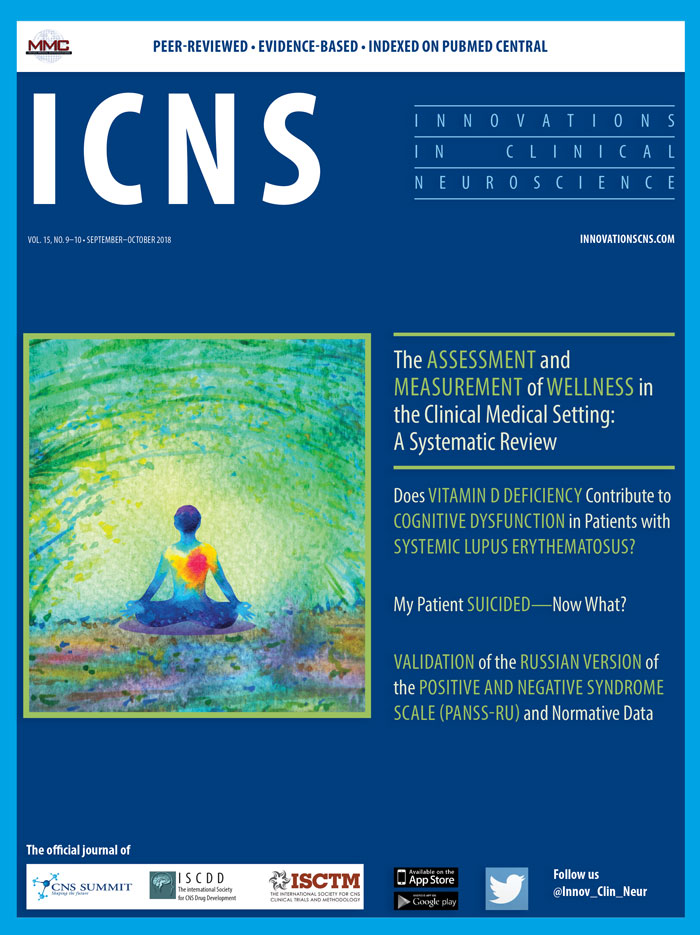
Dear Colleagues:
Welcome to the September–October 2018 issue of Innovations in Clinical Neuroscience (ICNS). We start this issue with a systematic review by Bart et al titled, “The Assessment and Measurement of Wellness in the Clinical Medical Setting: A Systematic Review.” Here, investigators reviewed the published literature in an attempt to answer the following: 1) What is the working definition of wellness? 2) What wellness assessment instruments have been evaluated or applied in medical settings? and 3) How valid, reliable, and accessible are these wellness assessment tools? The authors discuss several assessment tools most commonly used in clinical studies; however, they were unable to find sufficient evidence supporting the use of any one particular wellness instrument in clinical practice or research. They attribute this, in part, to a lack of consensus regarding the definition of wellness.
Next, Hussein et al present the results of their study, “Does Vitamin D Deficiency Contribute to Cognitive Dysfunction in Patients with Systemic Lupus Erythematosus (SLE)?” The investigators conducted a cross-sectional, case-control study in which a group of patients with SLE underwent a battery of neuropsychological testing. Results were compared to a group of healthy controls. Serum levels vitamin D of all participants were collected and analyzed. The authors report that patients with SLE performed worse on total recall of verbal memory and executive function tests compared with healthy controls. There was also a significant negative correlation between vitamin D levels and executive function among the patients with SLE.
Following this, in the Risk Management article, “My Patient Suicided. Now What?” Vanderpool reviews key legal considerations clinicians should keep in mind when faced with the tragic event of patient suicide. Protecting the security and integrity of the patient’s record, being prepared emotionally, and respecting a patient’s confidentiality, even after death, are just a few of the items she reviews.
And finally, in a validation study by Ivanova et al titled “Validation of the Russian Version of the Positive and Negative Syndrome Scale (PANSS-Ru) and Normative Data,” researchers sought to achieve the following: 1) complete linguistic validation for the PANSS-Ru, 2) perform psychometric validation of the Russian translation, and 3) present norms for the Russian and Belarusian population. The authors report that the rating criteria, interview guide, informant questionnaire, and scoring form were linguistically and psychometrically validated; moderate convergent validity was achieved between the PANSS subscale scores and total score with the Clinical Global Impressions-Severity Scale (CGI-S); and percentile normative data was collected from 533 subjects, which, the authors postulate, will be useful among clinicians as a benchmark of psychopathology and among researchers as a method of assessing efficacy of treatment interventions.
We hope you enjoy this issue of ICNS. As always, we welcome your submissions and feedback.
Sincerely,
Amir Kalali, MD
Editor, Innovations in Clinical Neuroscience





